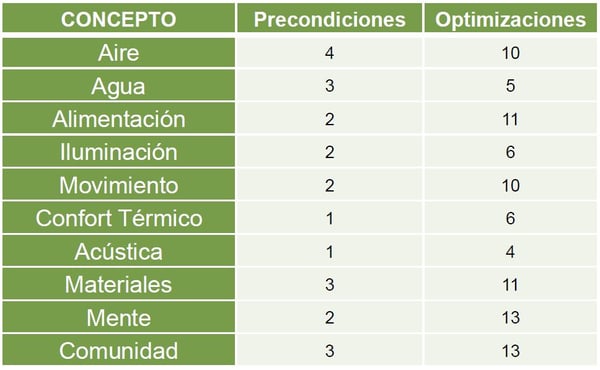WELL has reviewed its certification scheme. This is the second version of the rating system dedicated exclusively to the impact of buildings on the health and well-being of people.
Most notable news
The WELL certification seeks to improve the quality of indoor spaces and thereby enhance the comfort and health of the users. It is primarily oriented towards workplaces and bases its requirements on results, giving the design team freedom in how to achieve them.
This second version includes numerous improvements, based on the lessons learned from almost 1,000 projects in 34 countries that are using WELL.
Some of its most notable improvements are:
- New set of improvement proposals with fewer mandatory conditions.
- New ways to achieve objectives with a more precise approach.
- A new preliminary phase certification for projects wishing to obtain a WELL pre-assessment.
- Possibility of performing result verification through local providers.
- A better price adjustment by being able to pay the fees as an annual subscription.
The result is a simplified scoring system, clearer and better focused on the aspects with the greatest impact, designed to improve performance across all indicators.

A quarter of WELL projects are in Europe
In Europe, WELL has helped drive innovation in the real estate sector, providing a personalized approach to address geographical and cultural issues. Nearly 200 projects in 14 countries participate in the WELL initiative, representing a quarter of the total area of WELL projects worldwide. Its strong growth last year has been driven mainly by France, the UK, Spain and the Netherlands.
WELL v2 was born in response to this movement, to improve the ability to drive far-reaching change in buildings and communities in ways that help promote people's wellbeing. The new version is a great step forward in that regard, and we hope to see an excellent market reception in this pilot phase.

Regrouping of concepts into 10 categories
The work concepts have been expanded from 7 to 10 and some credits have been distributed differently, making their arrangement much more sensible now. Some new credits have also appeared. The preconditions have been reduced, and the possible optimizations have been expanded. The 10 categories of WELL v2 are as follows:

What are the requirements to achieve WELL certification v2?
The evaluation of the score has changed significantly. Now, in addition to meeting the preconditions, to achieve WELL Silver it is necessary to reach a minimum of 40 optimization points. The certification levels become:
- WELL Silver - 50 points
- WELL Gold - 60 points
- WELL Platinum - 80 points
Additionally, it is also necessary to achieve a minimum of two points per concept and up to a maximum of 12 points per concept.
Currently, we are working on various projects with WELL certification
Reduction in certification fees and their payment possibility
The calculation of certification fees and the payment method have also undergone a significant review. Firstly, the registration fee has been reduced from $5,500 to $2,800.
Secondly, certification services have been divided into two:
- Verification and support service
- Data collection visit and On-site test
The verification and support program allows payment through a 3 or 5-year subscription, which allows for a more gradual approach to projects as measures are incorporated. Additionally, from now on, data collection and testing can be carried out by a local entity.
In the words of Rick Fedrizzi, CEO and president of IWBI, "The result is a simplified scoring system, clearer and better focused on the aspects with the greatest impact and designed to improve the performance of the indicators."
Ultimately, the new version aims to help the growth of WELL certification by simplifying and optimizing concepts, making it a bit more accessible and allowing its implementation to be done more gradually, adapting to each organization's schedule.

